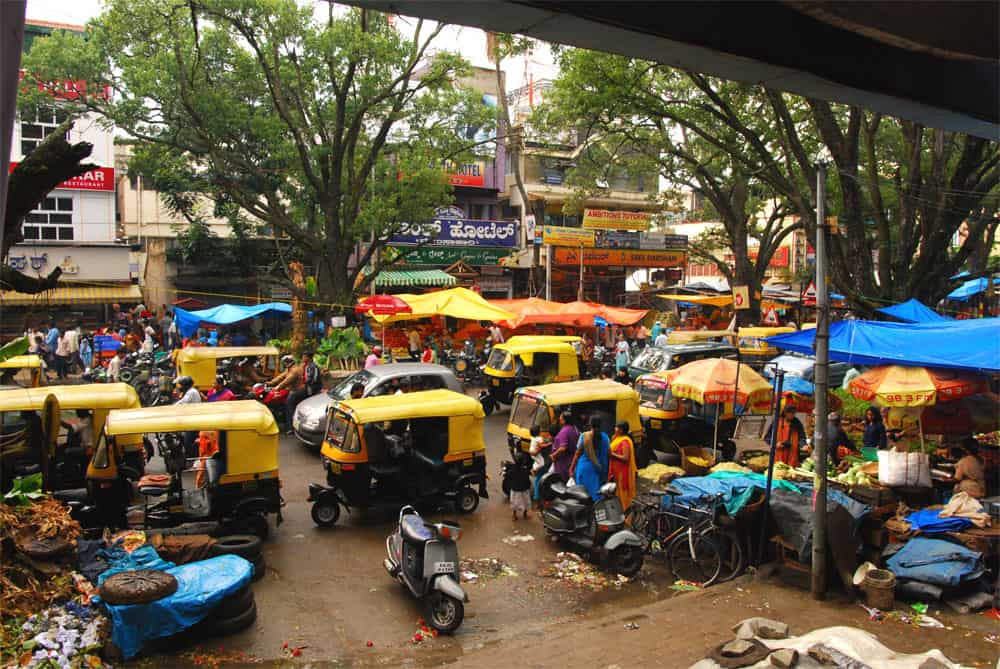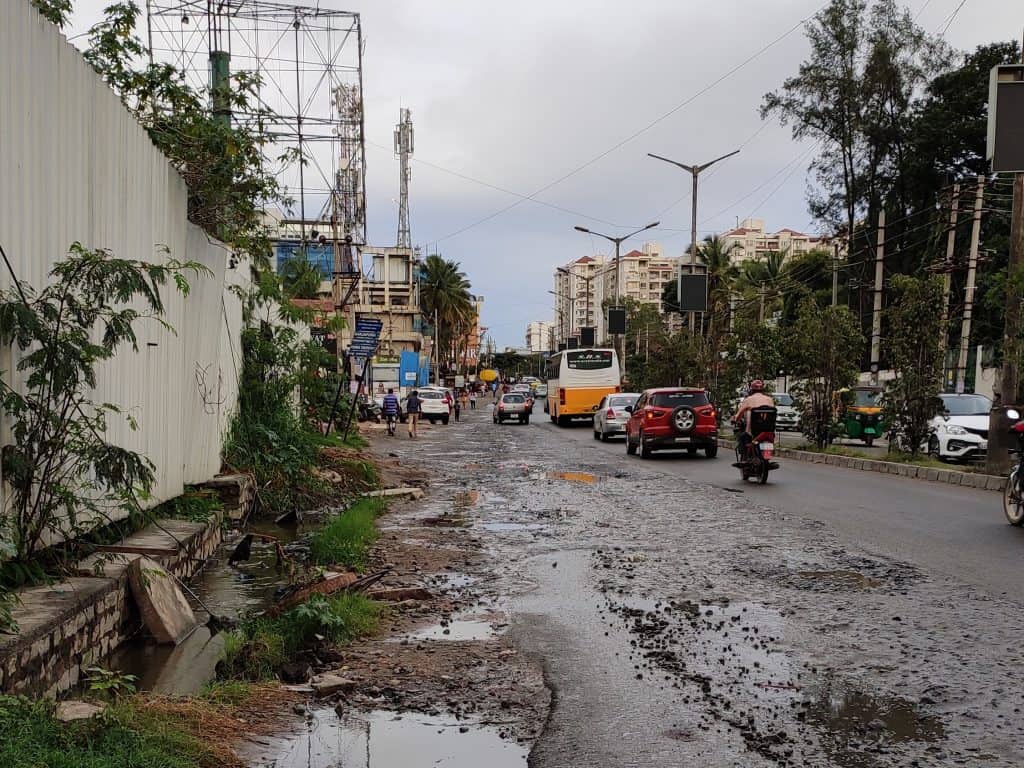The revamped Church Street, which opened to the public in 2018, was built to be primarily pedestrian-friendly. The project also integrated all the networked services under the road – water, sewage, power, gas, and stormwater drains, ensuring minimum disruptions.
(In)famous for being dotted with restaurants, bars, and pubs, Church Street is an attraction for tourists and residents, alike. The videos and reports on social media of how the street, and the adjacent Mahatma Gandhi (MG) road, were crowded on New Year’s eve, vouch for its popularity.
Five years later, even as Church Street is recognised for its design and aesthetics, it has been equally criticised for being high maintenance.
Citizen matters on January 6th, hosted a webinar titled ‘Lessons from Church Street- how can we revamp Bengaluru roads?’ to discuss whether the Church Street model can be scaled up in other areas in the city and what lessons can be derived from it regarding basic principles of urban design, road maintenance, and integration of all stakeholders in the decision making process.
Anchored by journalist Manasi Paresh Kumar, the discussion hosted V Ravichandar, a Bengaluru-based civic evangelist, Naresh Narasimhan, an architect and urban designer, who redesigned Church Street, and Srikanth Narasimhan, an entrepreneur and political activist.
The Church Street project was announced by the BBMP in 2015 and officially opened to the public in March 2018. “It was the first time that cobblestones were used instead of asphalt. It was lauded for being unique and rose to fame quickly, ” Manasi said.
Church street- a novel idea with shortcomings?
An experiment of this nature and scale was carried out for the first time in the city. “In a way, it is an aspirational experiment for Bengaluru. From a design perspective, we never have to dig up that road again for laying pipes or cables. All streets have to be designed and constructed in such a way that we never have to dig them up again,” Srikanth observed. However, he added that the construction went on for a long time and the stakeholders (residents and offices based there) were not apprised of the delay. “There was no proper communication as to what was being done, why there was a delay, etc.”
According to Naresh, the main reason for the delay was that the street was previously used as a service road for all the electrical infrastructure of MG Road, as the latter was mainly used by VIPs. “All the transformers that were supposed to be installed on MG Road, were on Church street instead. It took time to replace and remove all that, ” he said.
Read more: What’s going on with Church Street, and why?
Ravichandar said that the street upheld the principles of pedestrianisation. “The idea that streets need to be built around pedestrians is what Chuch Street epitomises. However, we should have wholly embraced the idea and ensured that it was Bengaluru’s first purely pedestrian street, ” he said. While the street was redesigned to be pedestrian-centric, he believes that it wasn’t ambitious enough to implement a complete no-vehicle policy.
According to Naresh, the initial idea was to make it entirely for pedestrians. However, there are people living on the street and offices located there, all of whom need space for car parking. However, the cobblestones automatically serve as a disincentive to motor vehicles, he pointed out. “It needs a push from the citizens to make the street strictly pedestrianised from Friday 6 pm to Sunday midnight,” he said. He, however, pointed out that it would have been good if a traffic barrier-cum-entrance would have been installed.
Benchmark for other streets?
“A street is a shared space, a road is meant for vehicular movement with proper footpaths,” Naresh said. He added that VV Puram street, which is being revamped, will aspire to be 100% pedestrianised from 6 pm to midnight everyday. Referring to the proposals to pedestrianise Gandhi Bazaar and VV Puram, Naresh said that the dynamics in each of these areas are different and so the approach shouldn’t be to replicate the Church Street model in these areas.

“Church street shows us that we can conceptually think of one or two areas in each part of Bengaluru where pedestrianisation can be integrated into its development,” Ravichandar said. If we scale it up geographically, we will have a city that is dotted with a set of pedestrian areas.
While Srikanth highlighted the lack of due communication among stakeholders while the construction of Church Street was underway, Ravichandar and Naresh pointed out that there was communication, but it was carried out largely on social media. “A clear communication to the people about the working schedule, what is the timeline for construction, what hours will the street be worked on, possible alternatives for commute are important,” Ravichandar said.
Read more: Road maintenance: What BBMP does not track
Corruption, contracts, and construction
The redesign of Church street cost approximately Rs 11 crores. Stating that there are areas in Bengaluru’s peripheries that do not even have roads, Manasi questioned how can this mammoth cost for a single street be justified. “How do we balance aspirational projects such as these with the basic necessities that are absolutely essential?”
“Striking the right balance is absolutely necessary and we have to work towards getting our road infrastructure right. While the project is not scalable at this point, once we work out the issues in the system– there is no reason why the costs cannot come down and this cannot be replicated on a larger scale, ” Srikanth pointed out.

Naresh said: “Church Street was based on the TenderSURE model, the principle of this was to design roads that last.” Referring to rampant corruption and vested political interests, he said that projects like Church Street challenges the current contracting system. “People in charge of these contracts have understood that there is no money to be made in the maintenance of these projects, hence there is a general reluctance to scale these models across the city,” he said. He referred to how streets that require no maintenance for several years, are of no interest to most contractors as they cannot generate revenue out of it.
Economically, Ravichandar said, while the initial cost of these roads is higher, the expenditure in terms of maintenance and re-asphalting comes down drastically. This, he stated, challenges the current contracting system and the vested interests in perpetuating the current system. “It costs ten times the amount to maintain a built asset as it costs to build it, over its lifecycle. Spending 20-30% more initially will extend its lifecycle by 20 years, ” Naresh said.
Watch the full discussion here: